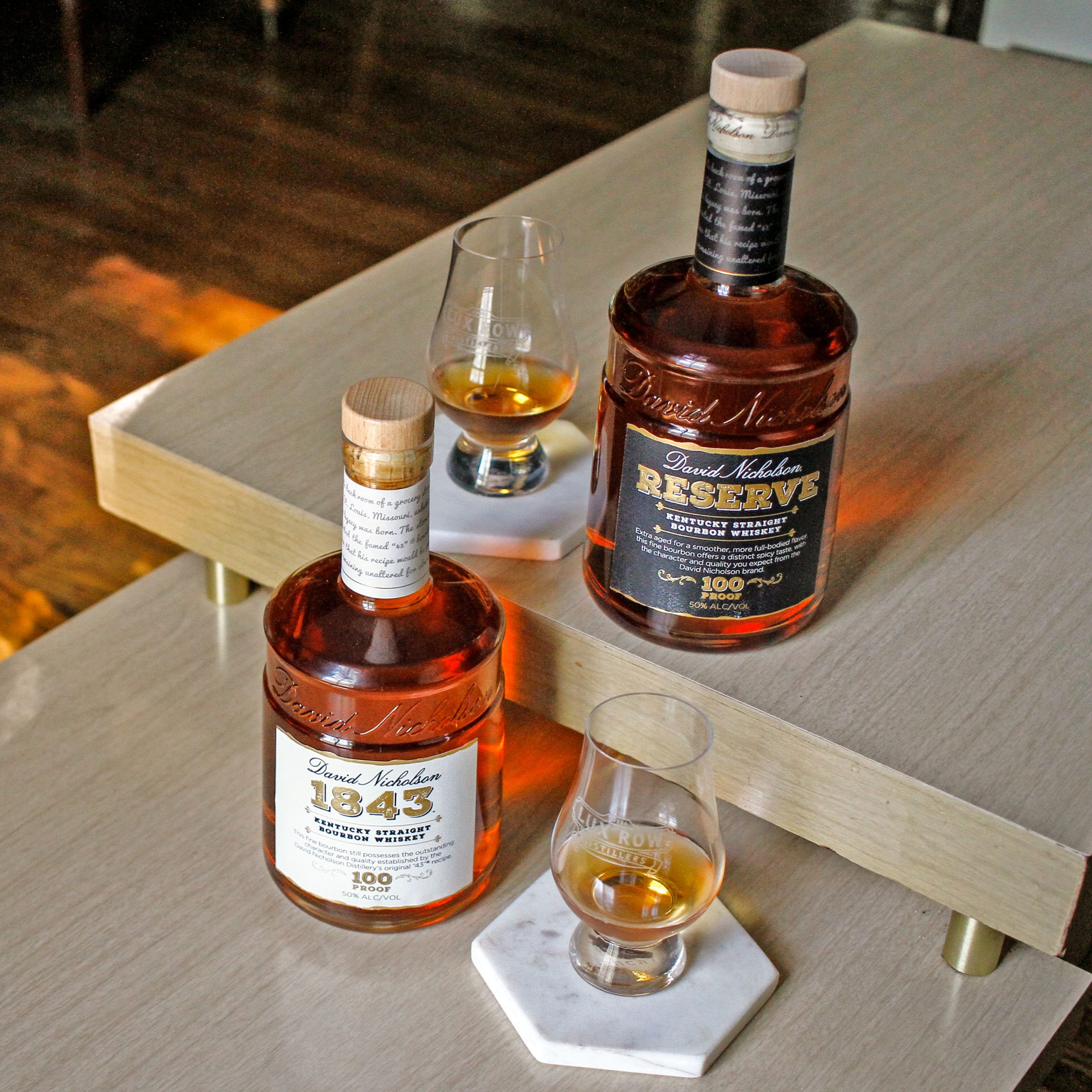
There are several requirements in place regarding whether or not whiskey can be considered bourbon. Not only does bourbon have to be distilled to no more than 160 proof and aged in new, American charred oak barrels, but it also has to be made from at least 51% corn. However, the grains that constitute the remaining 49% of the mash bill is left to the discretion of individual distillers—and it’s largely responsible for giving each brand and bottle its unique characteristics.
Besides corn and barley (which are mainly used for fermentation), wheat and rye are two of the most essential grains that go into making bourbon. Both have distinctive properties, and the ratios in which the two are used in the distilling process have a significant impact on the final taste profile of the bourbon–which is why wheat and rye are sometimes called the flavoring grains.
Here at David Nicholson, we produce bourbons that rely on both wheat and rye for their signature flavor, and we’re eager to share all the information you need to know about what wheat and rye do for our favorite spirit.
‘Wheated’ vs. ‘Ryed’ Bourbon
The most important thing to understand when it comes to how wheat and rye play a role in the bourbon-making process is the difference between ‘wheated’ and ‘ryed’ bourbon. Take a look:
Wheated Bourbon
- The predominate flavoring grain is Wheat
- Has a soft, sweet, fruity flavor
- Is mild and less spice-forward than ryed bourbons
Ryed Bourbon
- The predominant flavoring grain is Rye
- Has a spicy, intense flavor
- Are bolder and punchier than wheated bourbons
Sometimes the terms ‘high-wheat’ and ‘high-rye’ are used to describe bourbons with different grain ratios, but it’s important to remember that these labels are NOT referring to straight rye or wheat whiskey. At Lux Row Distillers, we don’t use a high wheat or high rye. Instead, we use 20% wheat in our wheated mashbill and 10% rye in our rye mashbill.
The best way to conceptualize the different flavors rye and wheat contribute to bourbon is to think about bread that’s made from each grain. Rye bread is dark, spicy, and polarizing, while wheat bread is sweet, mild, and crowd-pleasing.
History of Wheat and Rye in Bourbon
Using wheat and rye in bourbon largely aligns with general American history. Since rye thrives in cooler climates like the Northeast, American settlers first began making bourbon by relying on rye as a flavor-enhancing grain. As settlers moved further inland, they began using wheat, which thrives in the more moderate climate of the Midwest.
Although rye is often still the ‘go-to’ option for many distillers, using wheat in bourbon is becoming increasingly popular. Many whiskey connoisseurs now seek out bottles with high concentrations of wheat, and it’s also popular amongst people who are just discovering the exciting world of bourbon and want something that’s mellow and easy to drink.
Best Uses for Wheated and Ryed Bourbons
Both ryed and wheated bourbons are delicious when enjoyed neat, on the rocks, or with a single cube to open up their flavors. However, each type of bourbon lends itself particularly well to certain cocktails.
Classic, booze-forward drinks like manhattans (which often use straight rye) are enhanced by the strong, rich, zesty notes of a ryed bourbon. The flavors need to stand up against the other ingredients in the cocktail, which can overpower the gentle nature of wheated bourbons.
On the other hand, cocktails in which you don’t want the profile of the bourbon to be as prominent—such as in whiskey smash or a whiskey sour—work well with wheated varieties.
However, there’s no right or wrong when it comes to drinking bourbon, and the best way to discover what you like is to taste and experiment with different varieties.
Example of a Wheated Bourbon
David Nicholson 1843 is an incredible expression of a wheated bourbon that’s soft, smooth, and goes down easy. At 100 proof, it’s mellow and ideal for sipping. Tasting notes include:
- Butter
- Vanilla
- Subtle smoke
- Honey
Example of a Ryed Bourbon
David Nicholson Reserve is a delicious example of a ryed bourbon that’s perfectly balanced, spiced, and nuanced. It’s extra-aged, giving it a rich, full body and distinct flavor profile. Tasting notes include:
- Caramel
- Oak
- Wood
- Spices
Try either in a manhattan, old-fashioned, or boulevardier for a tasty, balanced cocktail!
Discover Which Grain is Right for You
Bourbon comes in a range of styles, and the best way to expand your palate is to taste a wide variety and make notes about the ingredients and ratios you enjoy. Understanding how the mash bill contributes to the flavor of bourbon can help you select bottles that suit your preferences and provide insight into how to best use them.
Pick up a bottle of David Nicholson Reserve to discover the depth and pleasant bite rye gives bourbon, or try David Nicholson 1843 to experience how soft and smooth it can be when it’s made with wheat. Find them near you, or visit us at our distillery to learn more!



